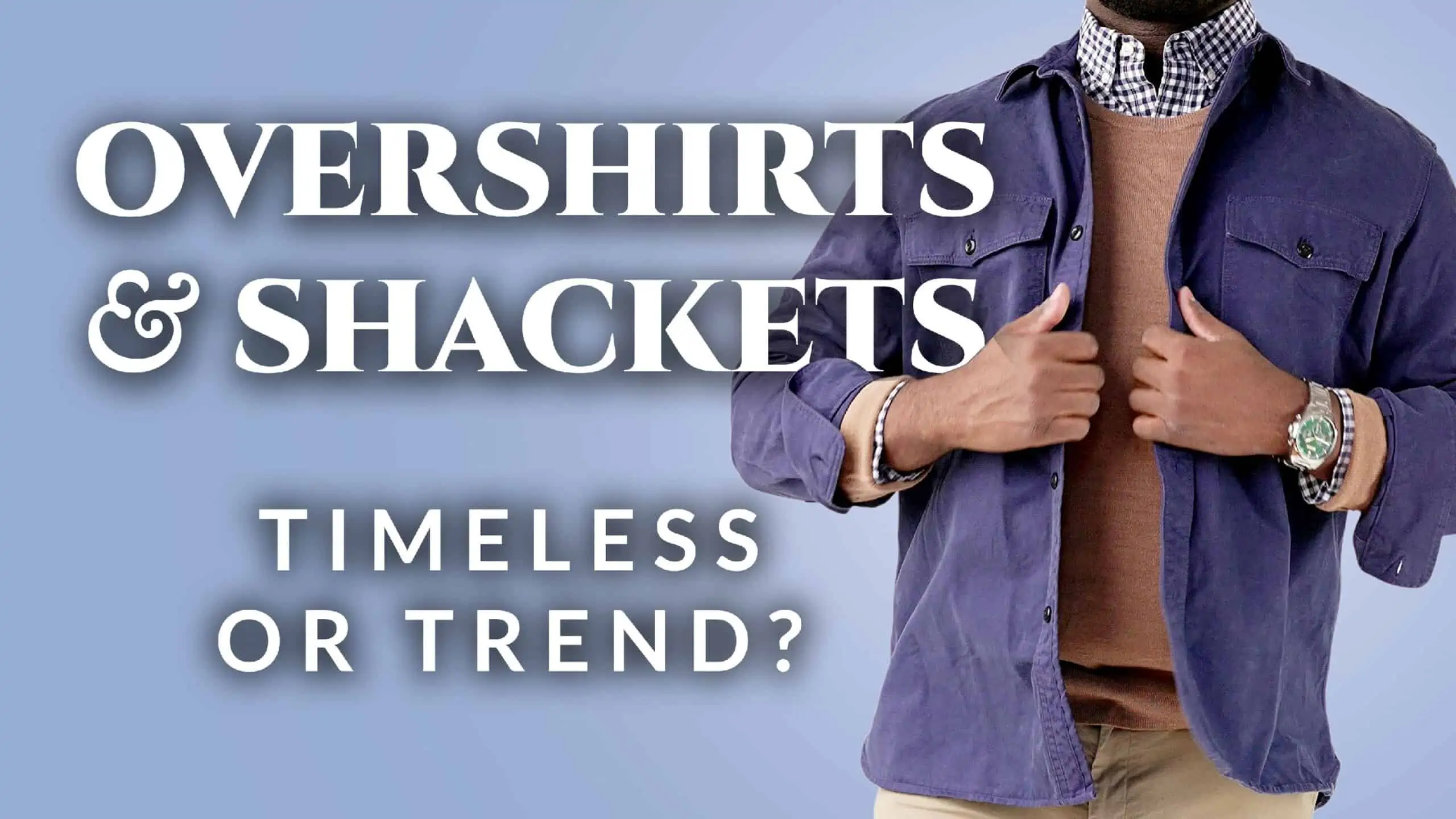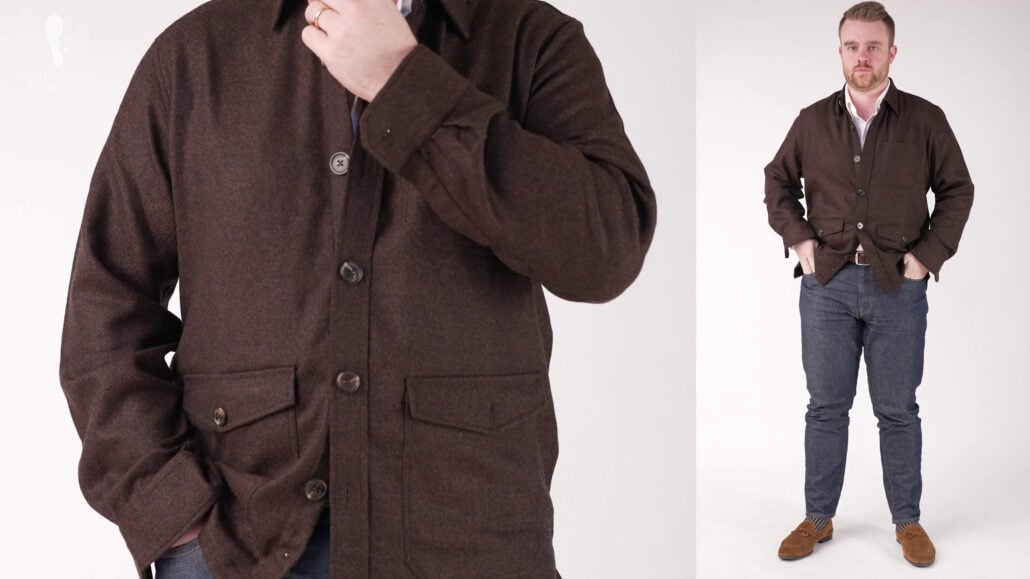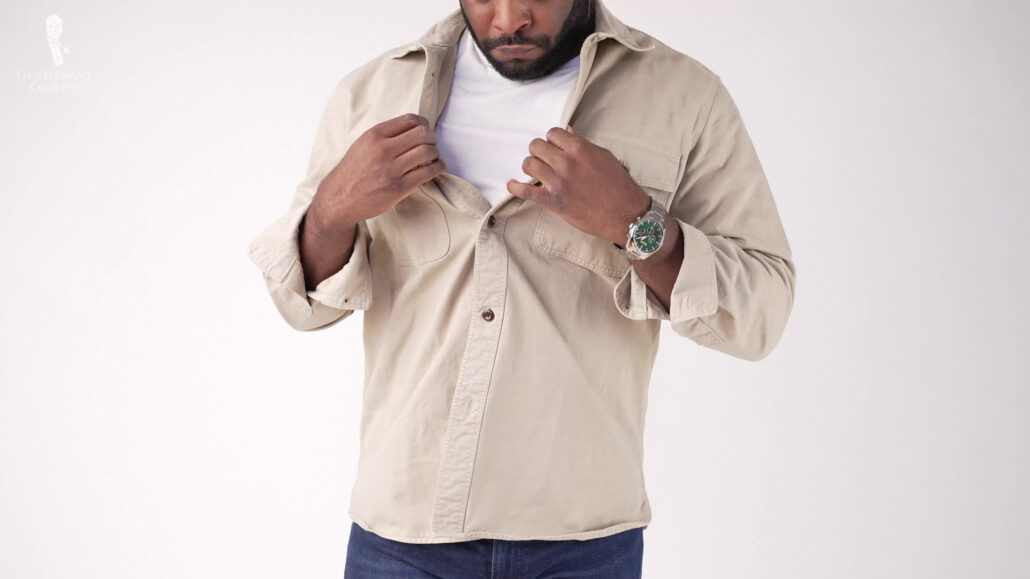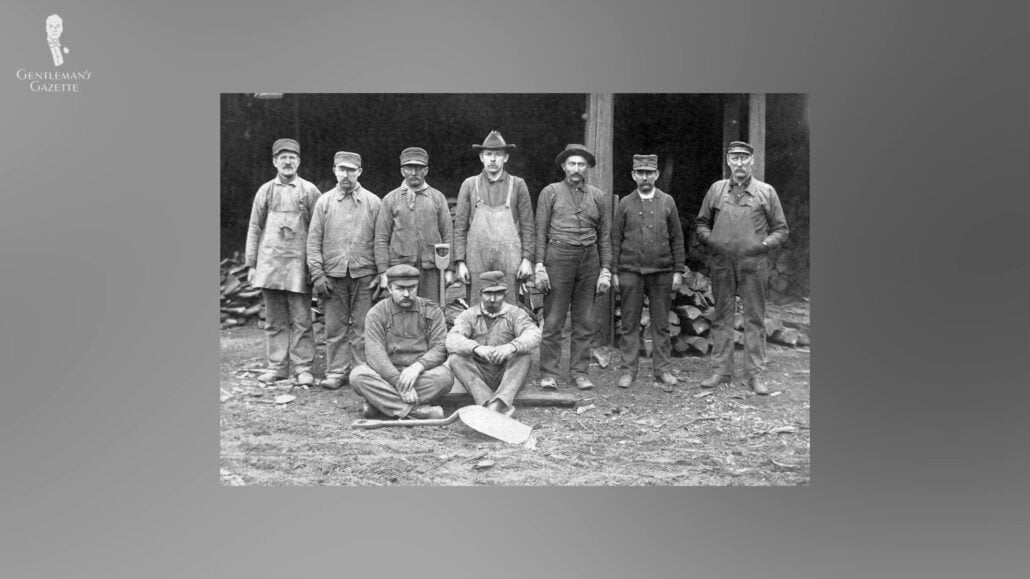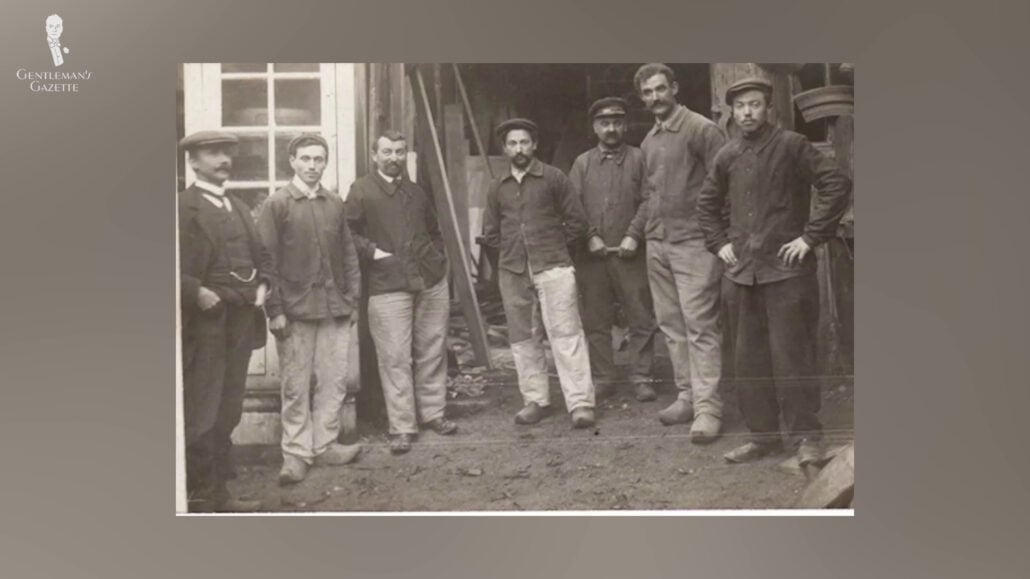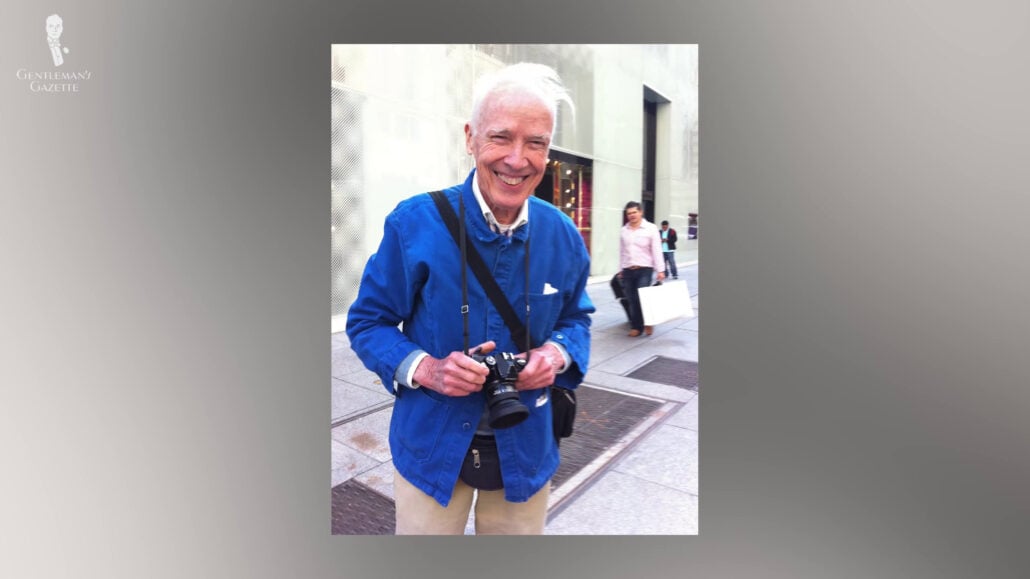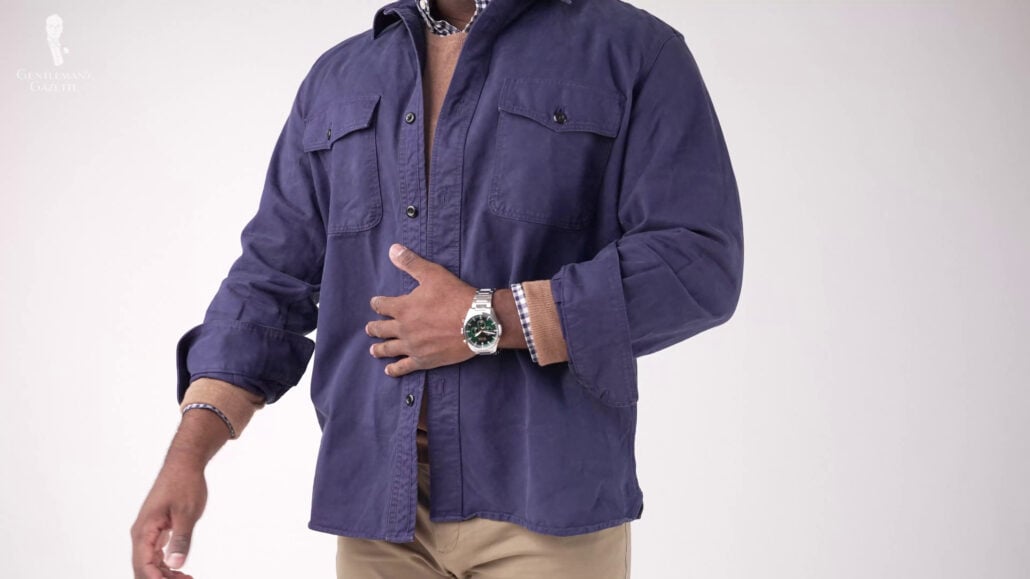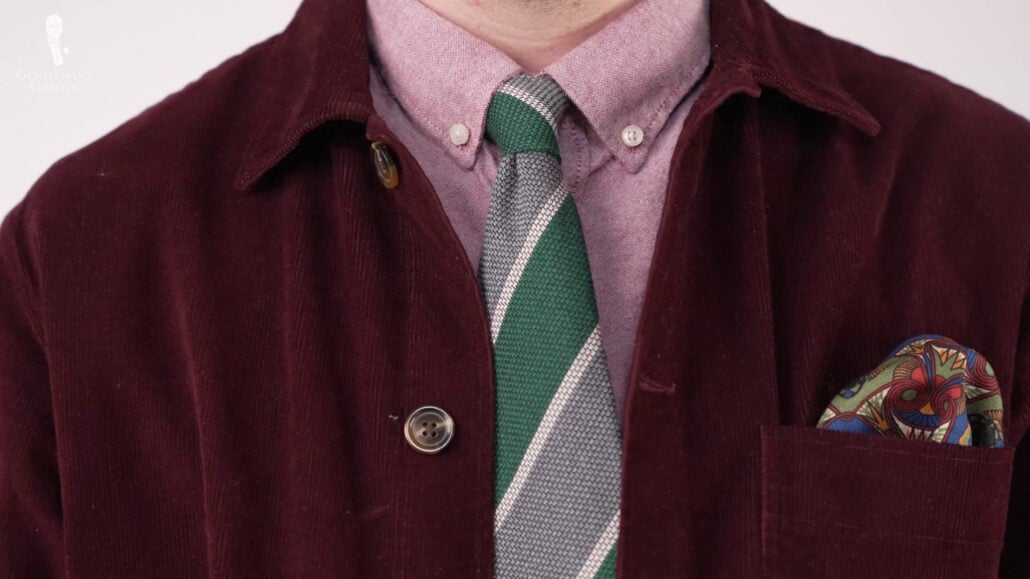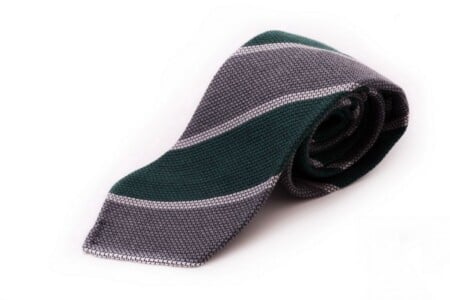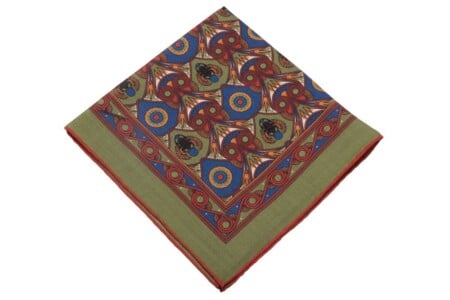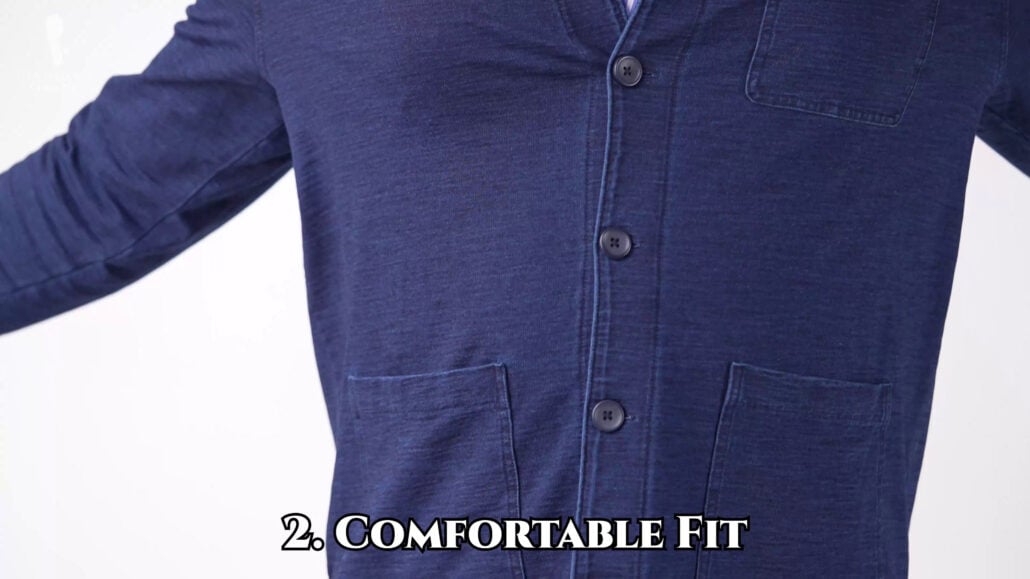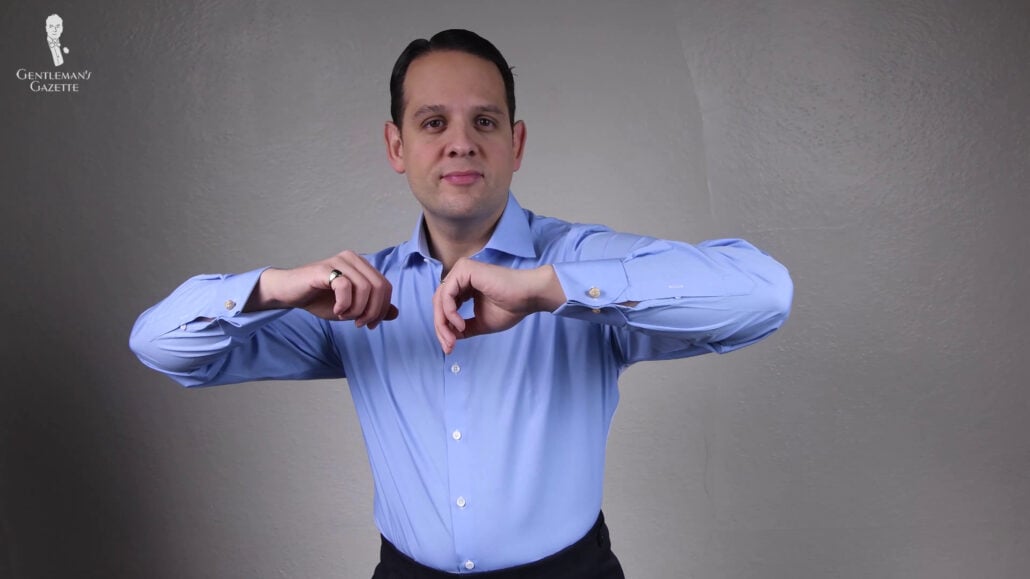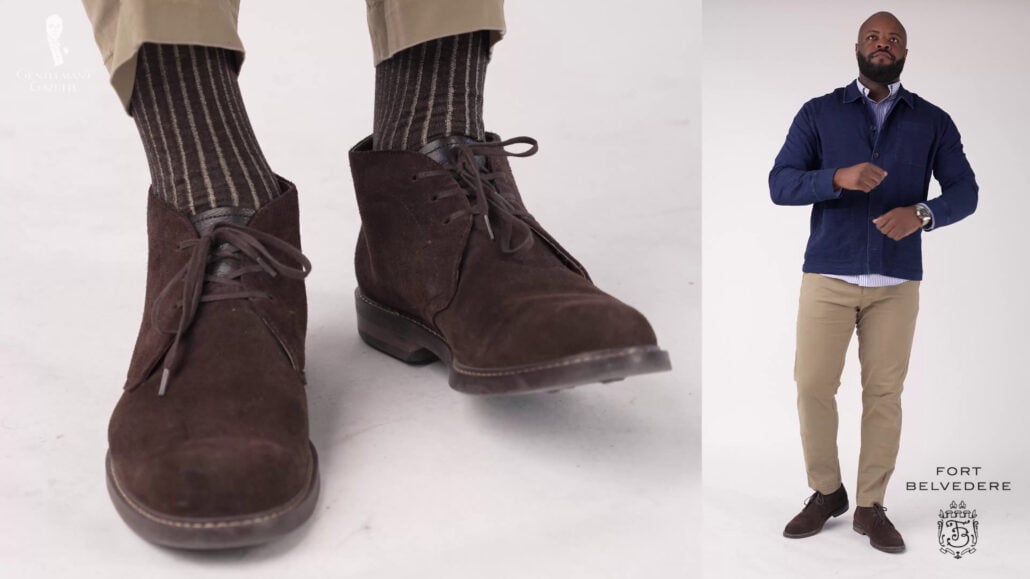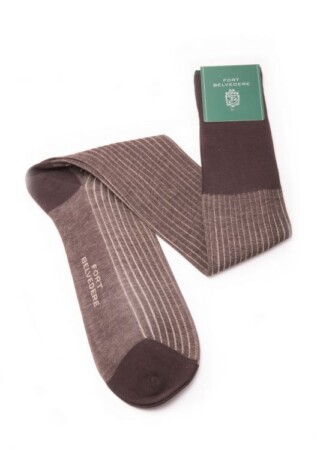In recent years, there has been a surge in popularity for the overshirt; it’s touted as being one of the biggest trends in menswear. We’re all about classic style, of course, but even the classic two-piece suit is an evolution of something from earlier on in history! So, today, we’ll be taking a look at the overshirt (or “shacket”) with a sartorial eye, and whether it’s a timeless treasure or a passing trend.
What Is An Overshirt (or “Shacket”)?
At this point, you might have worked out that an overshirt is somewhat different than a regular dress shirt. Indeed, its other name, “shacket,” is the merging of the terms “jacket” and “shirt,” which pretty much sums up what it is. We find “shacket” a bit odd, though–after all, we don’t call formal boots “shoots” because they’re somewhere between shoes and boots!
So, if an overshirt is a mixture of a shirt and a jacket, what respective features of each can you find in this garment? At a glance, it looks like a dress shirt; it’s got a collar without a lapel, it’s fully open at the front with a button or snap fastening to the neck, and it will typically have shirt-style cuffs, which can be fastened similar to barrel cuff shirts.
However, we can also see that it has elements that you can find on a jacket – more robust and hard-wearing fabrics, a more straight hemline at the bottom, and several pockets in varying styles, like a patch or a flap.
This mixture of features makes an overshirt unique as it certainly isn’t designed to be worn against your skin like a dress shirt. This means it sits more within the realms of being classified as a jacket than a shirt. And, of course, a regular dress shirt is made from lighter and softer fabrics. Dress shirts are usually designed to be comfortably worn as a first layer, not as a top layer.
History of the Overshirt
If you’re a regular reader, you know that we love finding out the origins of the clothes that we wear today and what exactly is it about them that makes them classic. We’ve looked at many different items of menswear, such as suits, shoes, and even gloves, to explore their long and storied history as to how they’ve evolved over time.
What makes the overshirt particularly interesting is how it really hasn’t changed its looks that much over time. Like most clothing, we could trace it back hundreds of years. The overshirt, however, really came into light as a garment of note in the late 1800s.
It was around this time that workers tasked with hard manual labor jobs were starting to modify their denim overalls. They’d keep the robust trouser portion, but remove the bib and braces for more mobility and to be as comfortable as possible when working in some pretty questionable conditions.
The result is now the iconic pair of jeans, which you can learn more about in our review of the Levi’s 501 Jeans.
In order to offer further protection to the top half of these workers, either from dirt and grime of the day or as another layer from the elements, manufacturers quickly designed a garment that ticked all the boxes for what these workers needed.
More specifically, this included the same robust fabric their trusty jeans were made from, the ability to be worn over the top of other clothing, adjustable levels of protection, and easy storage and access to items they might need throughout the day.
It’s here where the overshirt took on the same configuration as what we see today. Although, at the time, its less than glamorous origins meant that it was predominantly a garment of the working class and it was not worn by anyone who didn’t need to wear one–that is until, like most trendy items of clothing, it was worn by someone famous.
In this case, the celebrity was Paul Newman, who much like Steve McQueen, was a veritable style icon of the 60s. In the 1967 film Cool Hand Luke, we see Newman play chain-gang inmate Lucas “Luke” Jackson. He and other inmates wear a prison-issued overshirt they call a “chore jacket.” It’s a well-worn, light blue denim, bleached by the many years of wear in the hot Florida sun.
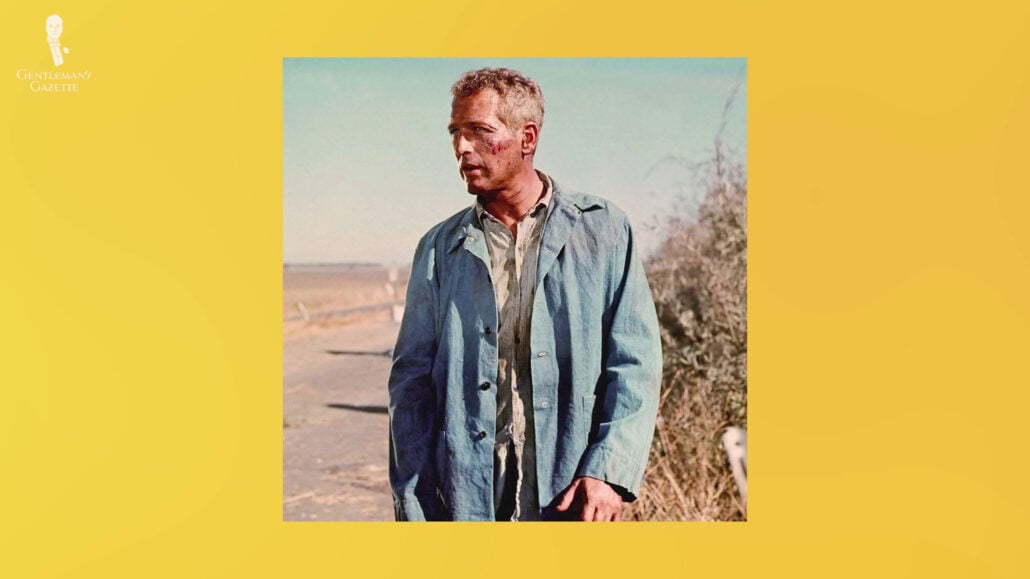
It features all the overshirt staples that we’ve already talked about – patch pockets, shirt-like construction, and can be buttoned up to the neck without a lapel. Although, I wouldn’t want to wear it that tightly in that kind of heat!
Newman was fond of wearing the overshirt, not just on set, but in his personal life, too. And we see him don the overshirt again on the set of the 1994 film Nobody’s Fool, this time in a sand color and sporting a corduroy collar, a feature that would be most notably applied to denim jackets.
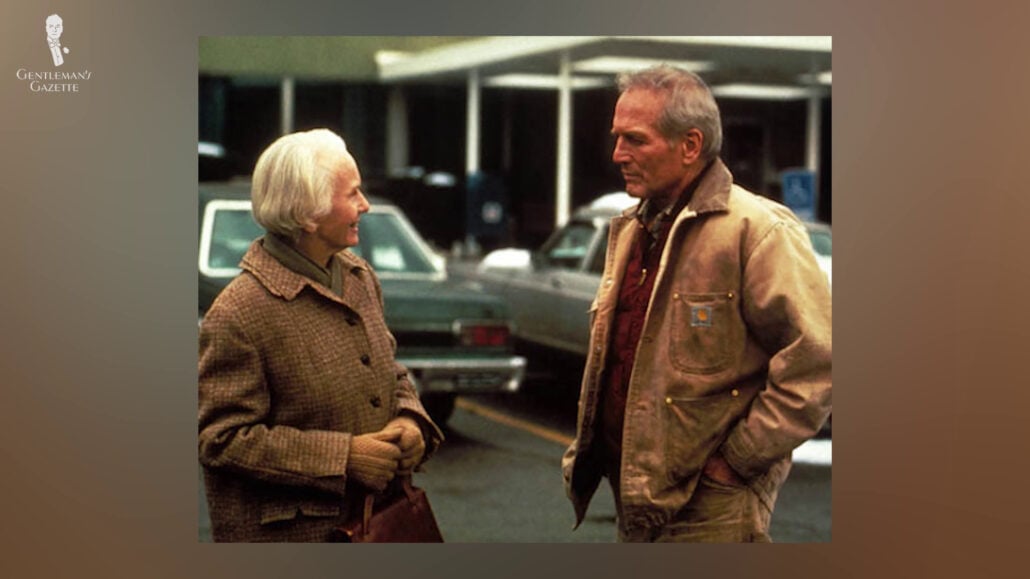
Indeed, the hard-wearing denim fabric would be refined into its own unique type of jacket. The overshirt would become more associated with robust cotton twill and other such practical cloths.
New York photographer Bill Cunningham was another individual synonymous with the overshirt, almost religiously wearing a royal blue model for the most part of his four-decade career.
And now, into the 21st-century, we see the popularity of the overshirt is booming, being worn by celebrities, influencers, and menswear aficionados alike.
What Makes A Good Overshirt?
1. Sturdy Fabric
At this point, it goes without saying that an overshirt needs to be made of something sturdier than your typical dress shirt material. It’s probably best to avoid the fine cotton poplin. Instead, an overshirt should be made of something robust with a strong feel to it.
A nice weighty cotton is one of the best choices for an overshirt. It’s a little more refined than some of the hard-wearing fabrics, such as denim, but it can still hold its own when it comes to durability.
Linen is another great choice for an overshirt as the fabric is surprisingly strong. Of course, one of the characteristics of linen is that it wrinkles. But, when you have a well-made overshirt and a quality and dense linen, it can look extremely elegant in both formal and casual ensembles.
As far as other fabrics go, pretty much anything can be made into an overshirt – corduroy, wool, flannel, even leather.
We feel that there’s a difference between fabric with substance, like a heavy cotton twill, and fabric that’s just big, something like a thick and fuzzy wool. These types of fabrics take the overshirt away from the shirt portion and closer to a full-blown jacket.
Overall, we believe the best overshirts are made from traditional shirting fabrics, the robust kind like cotton, linen, and corduroy. If you’re looking for a heartier fabric, a fine wool that keeps its sartorial edge can be a fine choice.
2. Comfortable Fit
By now, I’m sure you know that we’re all about fit here at the Gentleman’s Gazette. So, it should come as no surprise that with an overshirt, fit has an important factor.
As is often the case, the optimal fit will sit somewhere between loose and tight. But, as an overshirt is meant to be a more relaxed layer, it’s better to lean towards a roomier fit, as the tight fit will not only restrict your movements but also what you can wear with it.
3. Practical Pockets
As the origins of the chore jackets suggest, an overshirt should give you the opportunity to transport and store your items throughout the day. The kind of things that a suit jacket might enable you to also carry around; things like your wallet, keys, phone, even a pen, and any other essential items you might need in your everyday carry.
With these items in mind, pockets are going to be the name of the game when it comes to an overshirt. Just how many pockets you need will, of course, be up to you. There are basically two different styles of pocket configurations when it comes to overshirts – the double-breasted pocket configuration or a single-breasted pocket with patch pockets at the hip.
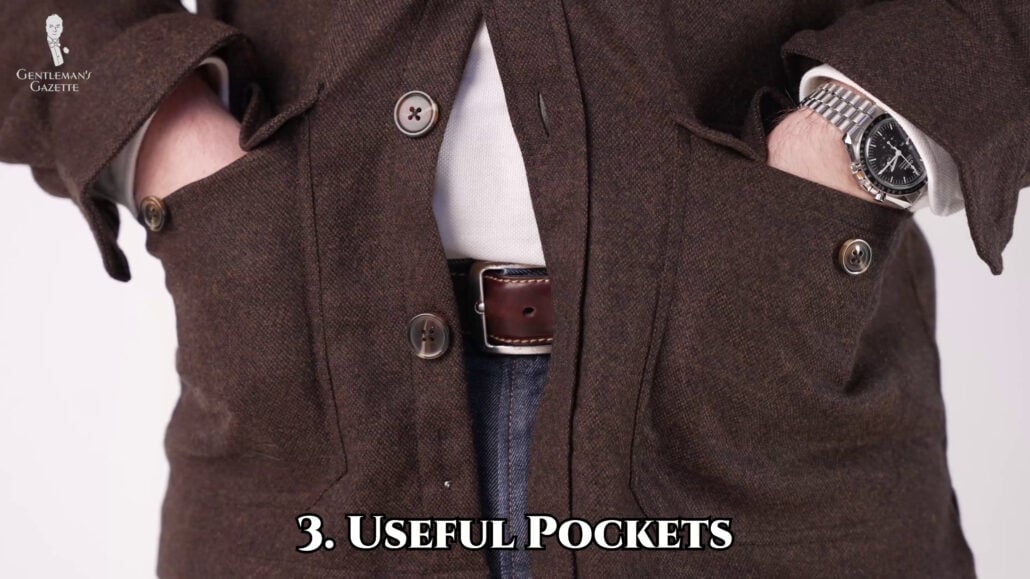
We find the double-breasted pocket configuration to be a little bit unbalanced. The two symmetrical chest pockets at chest height with a lot of space underneath just look a little bit odd. This style looks far better on the trucker denim jacket style. The extra seam lines help balance the design.
On the other hand, a single-breast pocket with patch pockets at the hip is much more reminiscent of something you would see on a tailored jacket. Therefore, that is our preferred style of pocket layout on an overshirt.
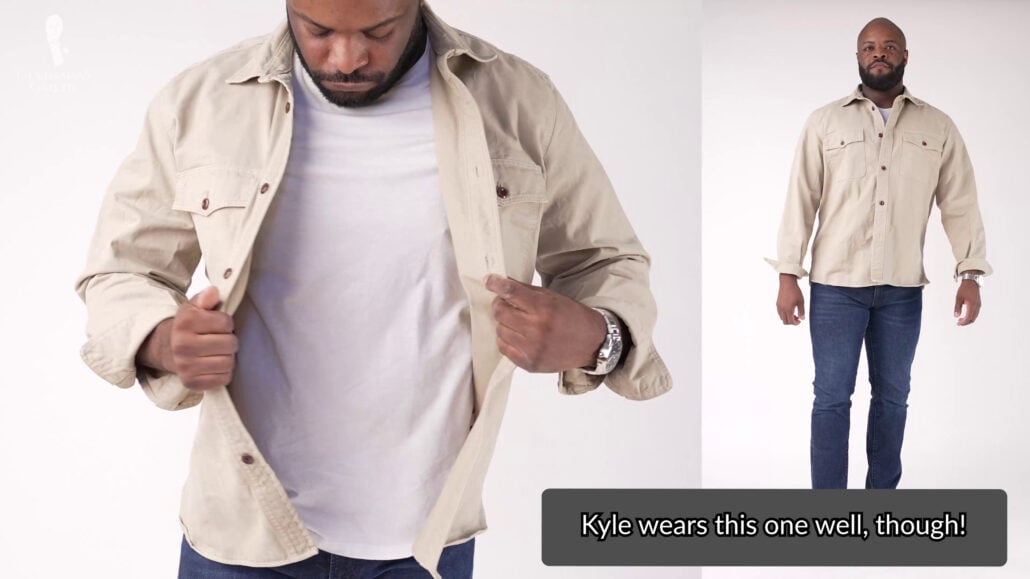
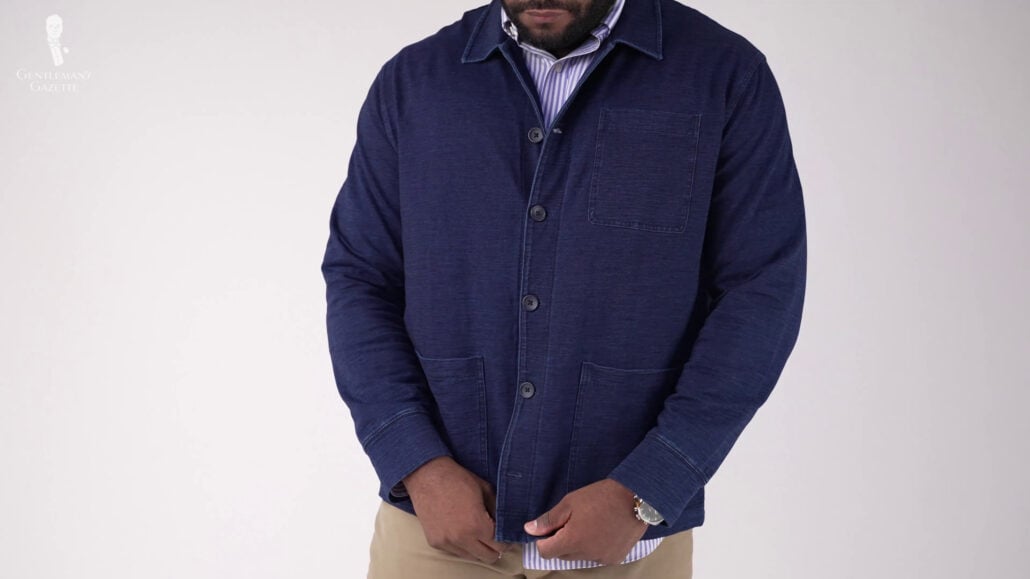
As we feel like it’s closer to being an odd sports jacket, which we find much easier to combine with elements of a classic wardrobe, some overshirts will have flapped patch pockets, which close with buttons or snap fastenings, and we think you’ll agree that the button closure is a very elegant and secure choice.
Some particularly nice examples of overshirts come from the British manufacturer Drake’s. If we look at their jacket, we can see all the style elements of what we’ve talked about today working together in brilliant harmony.
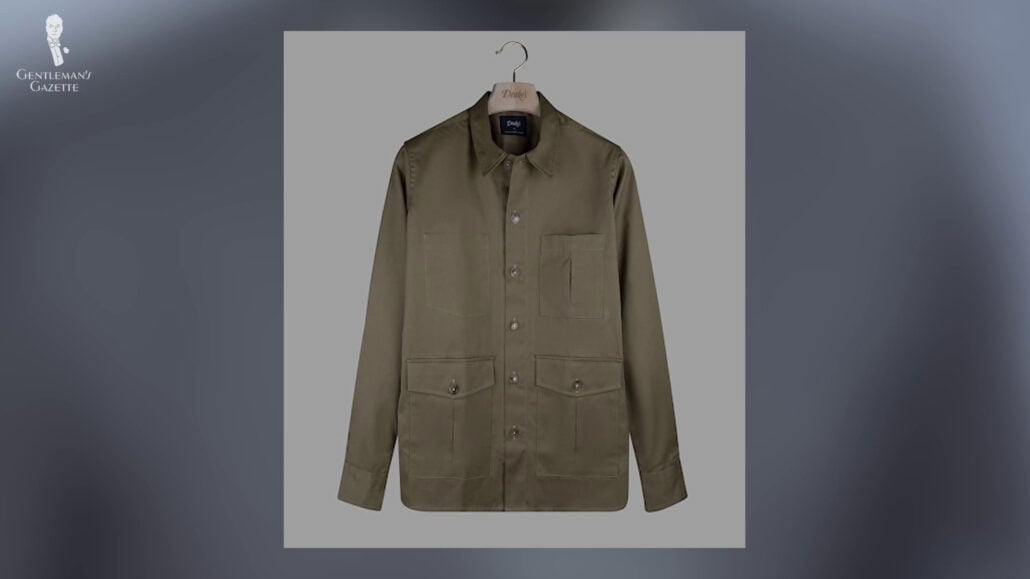
A weighty cotton twill in a not too tight, not too loose fit with flapped patch pockets secured with buttons at the hip, and a single-breast pocket that shaped, which looks like a pocket on the opposite side, is actually the stitching of an internal pocket for the inside of the jacket, which is great for keeping important items close to your chest, literally.
Does The Overshirt Have A Place In Your Wardrobe?
After looking at the hallmarks of a quality overshirt, let’s see how it could fit into your wardrobe. There’s no denying that an overshirt is on the more casual end of the menswear spectrum, which is why I’m here instead of Raphael or Preston. But, that doesn’t mean to say you can only wear casual clothes as some other style sites might have you think.
I’m sure we can do better than the suggestion of just buying nine different overshirts to wear with a t-shirt and jeans!
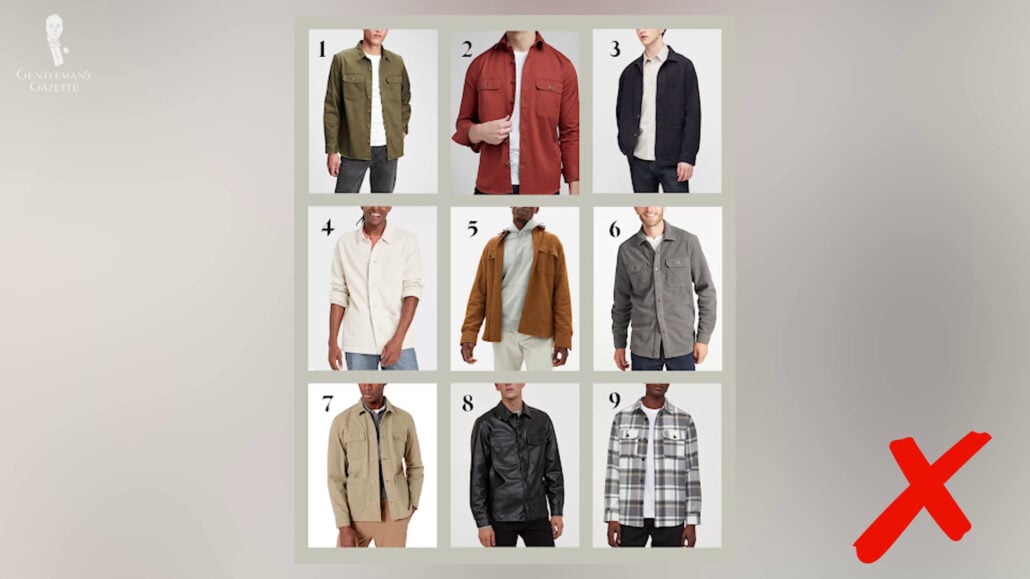
Outfit Ideas for Overshirts & Shackets
The trick to getting over shirts just right is to look at traditional menswear colors – browns, greens, and blues. These are all fantastic shades to look for in an overshirt. These will also lend the most versatility when it comes to styling.
As far as patterns go, we’d also suggest staying away from loud prints and patterns. Instead, allowing the texture of the fabric to add some visual interest like a rustic and slubby linen.
Casual Looks
Let’s start off with the casual end of things with a pair of classic dark wash jeans, perhaps a simple white t-shirt, an overshirt in burgundy, or even other earth tones. Wool or corduroy would be great options here, but you could also do a robust cotton as well. Dark brown shoes or even chukka boots with a matching belt.
This look is such a great way to elevate a casual ensemble to a refined classic outfit. By adding the overshirt to this ensemble, you get the versatility of being able to wear it open as a jacket or buttoning it up like a shirt. The latter of which will make it a touch more formal.
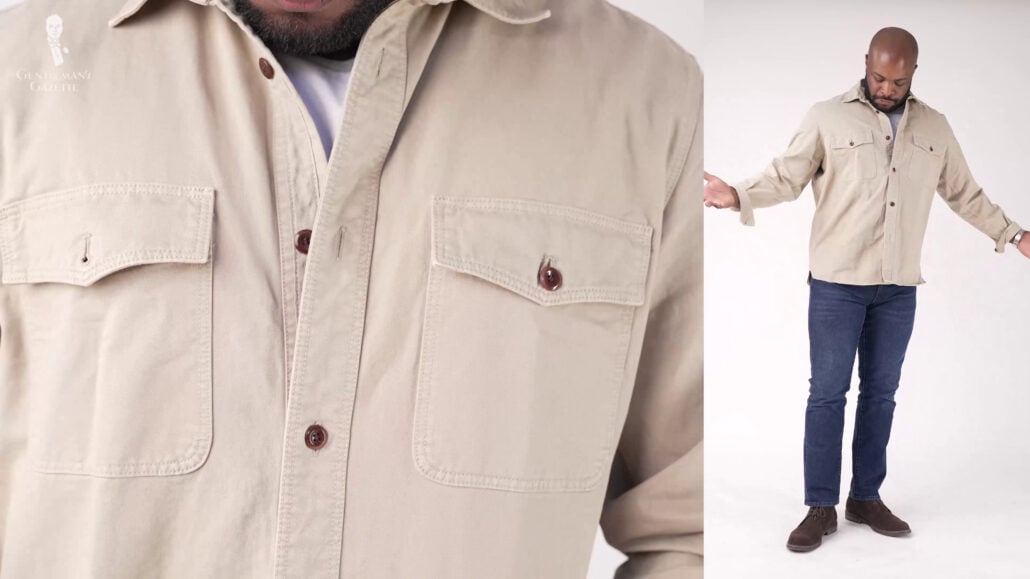
Because the overshirt has a shirt collar, your face is framed in a way that an odd jacket would not be able to. Popping the collar like adds the element of casual confidence to the look, too. Styling points such as the leather belt and shoes emphasize the casual touch. But, because the shoes aren’t ultra-casual sneakers, there’s a bridge between casual and formal.
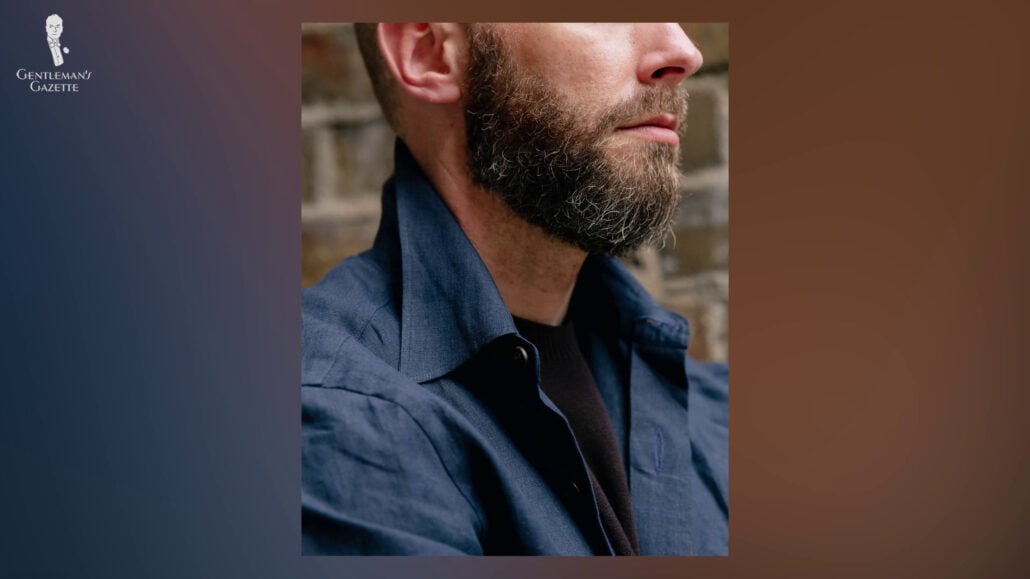
More Formal Looks
Sticking with a similar overshirt, let’s take things to the other end of the spectrum by adding a few formal touches. A classic Oxford cloth button-down shirt or even a patterned sports shirt and neutral chinos will all serve as the base for this outfit. And adding a striped tie and a complementing pocket square will serve as the color elements in this outfit.
Because the shirt might sit more on the casual side, it works well with the nature of the overshirt, whereas a spread collar dress shirt with double cuffs would be far too formal to add here with the patch pocket on the breast adding a splash of color through your pocket square is so easily done. And it could even be applied to the previous, more casual look as well.
Although you could easily wear this ensemble without a tie, it really does a lot to help pull everything together in this outfit. As a pro tip, stick with casual fabrics for your tie and pocket square. A shantung, knitted or grenadine tie strikes the perfect level of formality here, as well as soft wool or linen pocket square.
You can even experiment with adding additional layers such as the knitted waistcoat or sweater. Doing this provides more visual interest and also provides a greater element of warmth, which brings us nicely to the question of seasonality.
What Are The Ideal Seasons For Overshirts?
Although an overshirt is an ideal transitional layering piece, we say you can wear one year-round, even in the depths of winter or at the height of summer. It all depends on how you choose to layer it by adding items from your wardrobe in seasonal fabrics, such as breezy linens and seersucker in the heat and cozy wools and flannels in the cold.
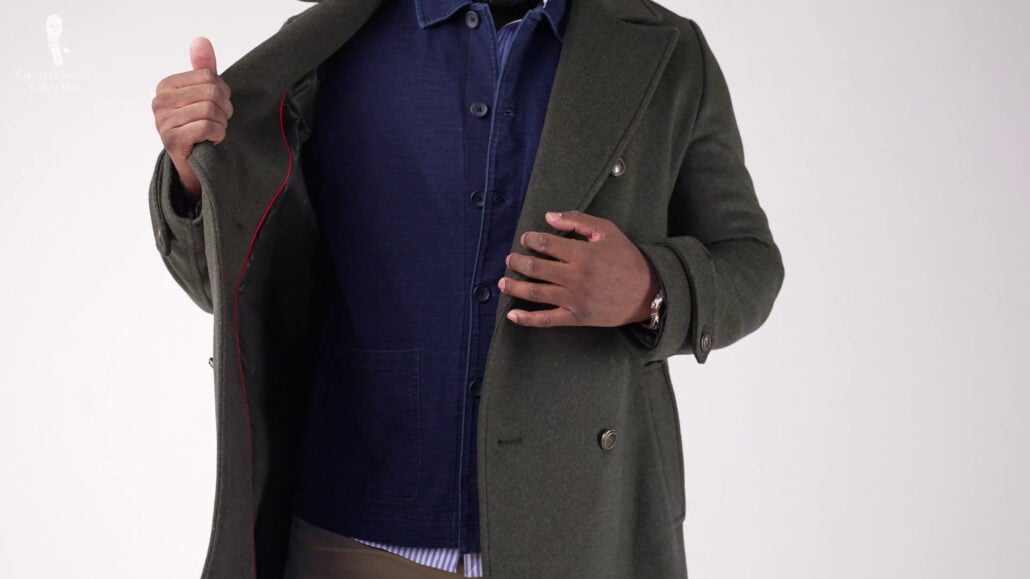
You can even use an overshirt as a middle layer with an overcoat or trench coat on top. If anything, we’d consider an overshirt to be just as versatile as an odd jacket and, perhaps, even more so in its ability to transcend into casual elements of an outfit more than some sport jackets.
Is The Overshirt Timeless or Trend?
So, after taking a look at the overshirt, its history, and its place in your wardrobe today, we come back to our main question: is it a timeless classic or simply just a passing fad?
Well, it’s certainly not a brand new item of clothing that was designed just a few years ago as we saw with its origins in late 19th-century workwear. So, it’s definitely stood the test of time. The fact that when you look at one of those historical garments next to a more modern version today, you could go out and buy one. It really is remarkable how little the overall design has changed.
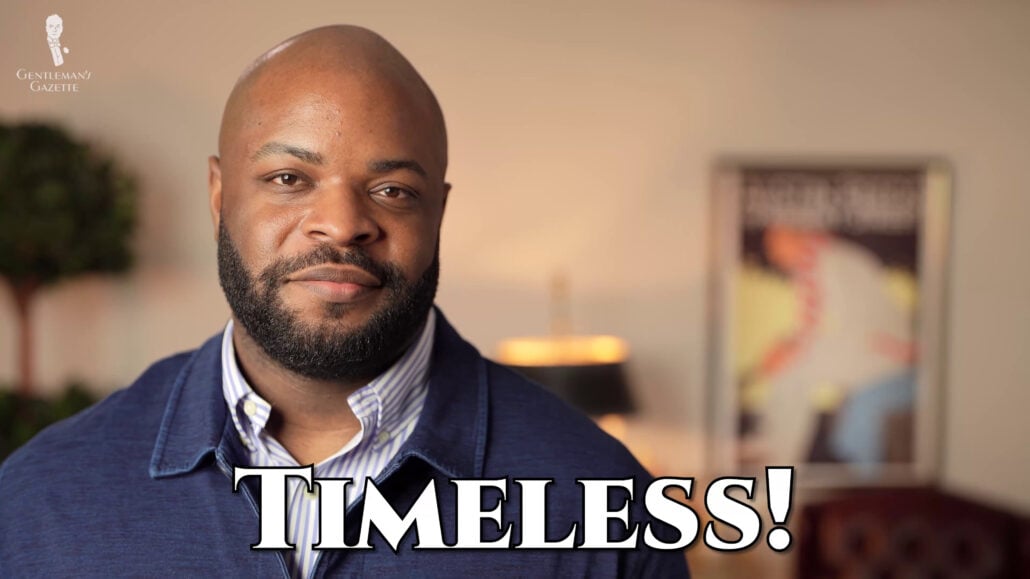
But, what really ticks the box for us is the multitude of styling options and the ease of which and how you can incorporate an overshirt into your wardrobe for both formal and even casual looks. Therefore, we say that, on balance, the overshirt is a timeless garment!
As with most clothing, there will be particular iterations of the overshirt that might push it into the more trimmed territory, such as the choices for fabrics, fit, and detailing. But, if you stick with the classic design that we’ve discussed here, then you’ll be guaranteed to enjoy a timeless overshirt.
Outfit Rundown
Today, I’m wearing a blue overshirt with a blue and white striped sport shirt, khaki pants, and brown chukka boots. And, of course, rounding out the outfit, my brown shadow-stripe Fort Belvedere socks. Check out the Fort Belvedere shop for socks like these.
